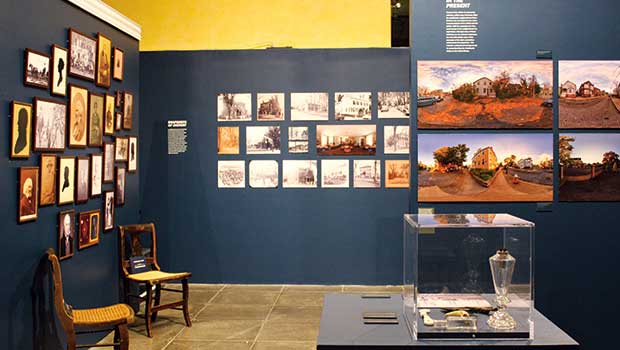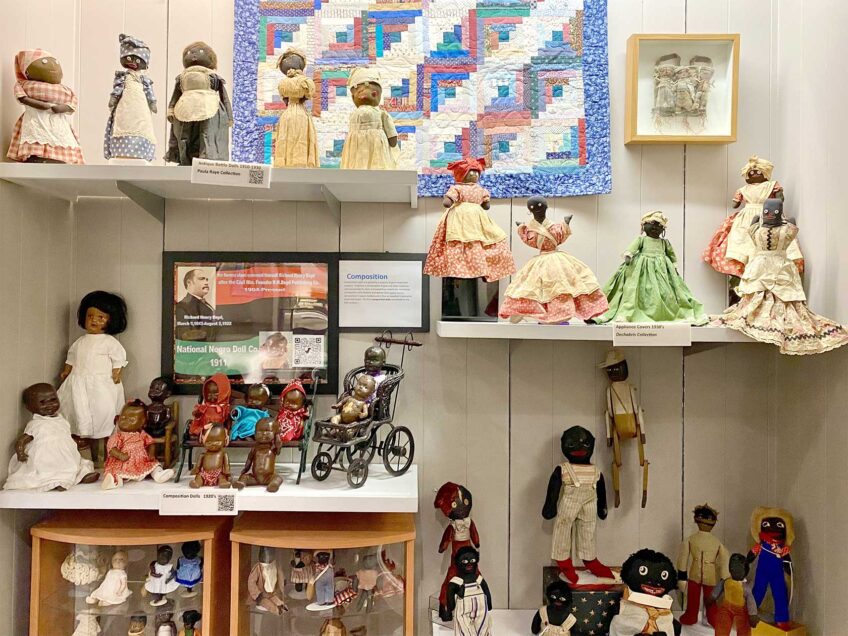‘Black Spaces Matter’
Architecture exhibit highlights New Bedford black neighborhood

The McCormick Gallery at the Boston Architectural College celebrated the opening of the show “Black Spaces Matter” on Friday, Dec. 1. Running through Jan. 29, 2018, the multimedia installation examines the abolitionist neighborhood near the New Bedford Whaling Historical Park, which was home to a diverse mix of African American and white abolitionists in the 18th century. This lens fosters a broader discussion of racial politics in architecture and urban planning.

Author: Celina ColbyJana Cephas speaks during a panel discussion.
On the Web
For more information about “Black Spaces Matter” at Boston Architectural College, visit: http://bit.ly/2kstGtx
The exhibit includes artifacts from the New Bedford Historical Society, interviews with local residents and a virtual reality station to view the neighborhood in 3-D, among many other features. The opening reception included a panel discussion with the exhibition contributors, moderated by curator Pamela Karimi, and lectures by Lee Blake, president of the New Bedford Historical Society and Jana Cephas, assistant professor of architecture at the Taubman College of Architecture and Urban Planning.
“New Bedford was a sanctuary city before we knew what that was,” said Blake. “The focus is always on white abolitionists, but New Bedford was full of black abolitionists, West Indian abolitionists and Native American abolitionists.” The New Bedford Historical Society works actively to highlight the city’s black residents and history. Blake notes that as early as 1840, black politicians were running in local elections.
The lectures and panel raised many questions from the audience about gentrification. Both Blake and Cephas maintained that preservation and celebration of black spaces were steps towards preventing erasure. Many of the artists and architects involved in the exhibition said they had trouble finding records of the buildings and the history of their former occupants. The hope is that the work of Cephas and Blake will prevent these kinds of gaps for future researchers.
Cephas is part of a growing group of researchers and writers on race and architecture. Inspired by W.E.B. Du Bois’ census of black populations, she’s compiling a digital resource of black buildings and architects in cities all over the United States, including Boston. “The attempt here is to create a database of stories, both social and spatial, that’s accessible to all,” she said.
The exhibit at BAC functions in the same way. Though there are models and details pertaining specifically to the architecturally significant elements of the buildings, visitors also hear stories from the residents and can see the change in the neighborhood over the years. “Black Spaces Matter” brings to light the safe haven New Bedford was for freedom seekers, while also underscoring the importance of preserving contemporary black spaces.


![Banner [Virtual] Art Gallery](https://baystatebanner.com/wp-content/uploads/2024/04/Cagen-Luse_Men-at-store-e1713991226112-150x150.jpg)

![Banner [Virtual] Art Gallery](https://baystatebanner.com/wp-content/uploads/2024/04/Cagen-Luse_Men-at-store-e1713991226112-848x569.jpg)

